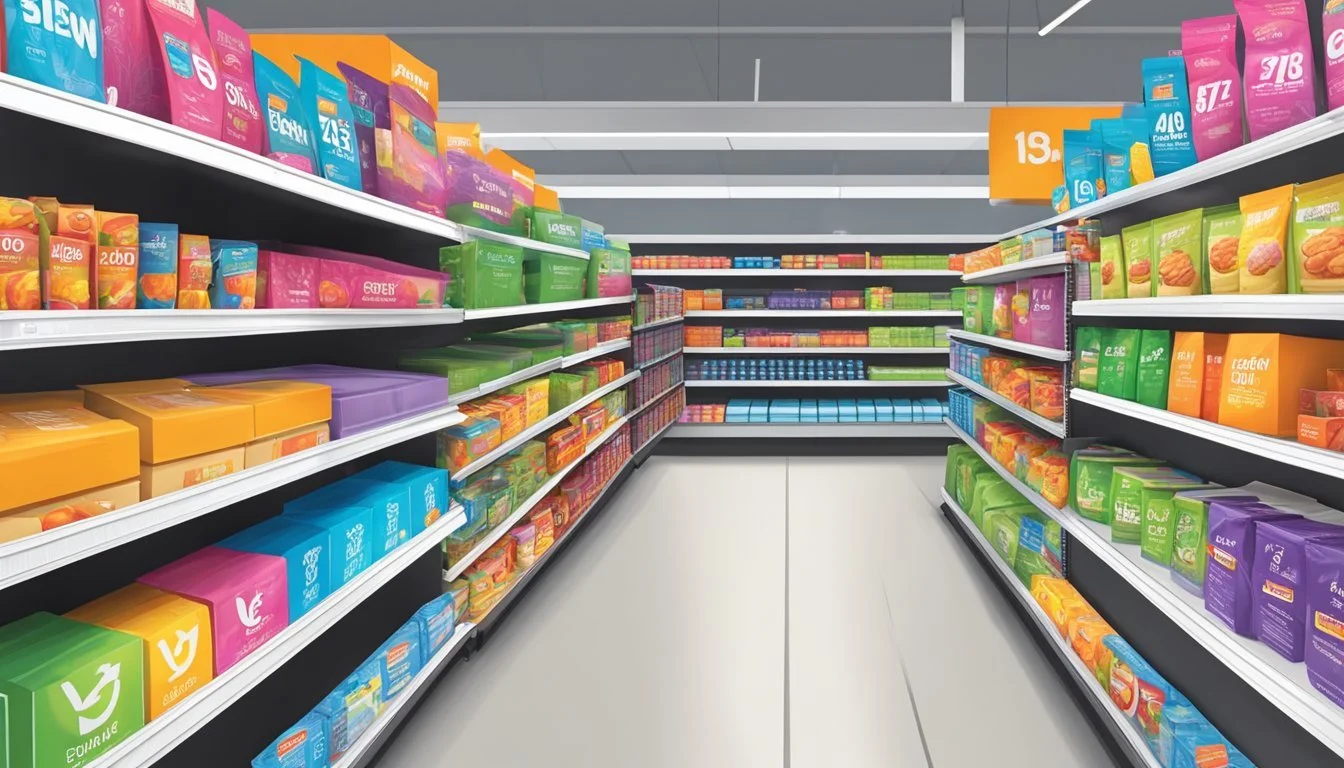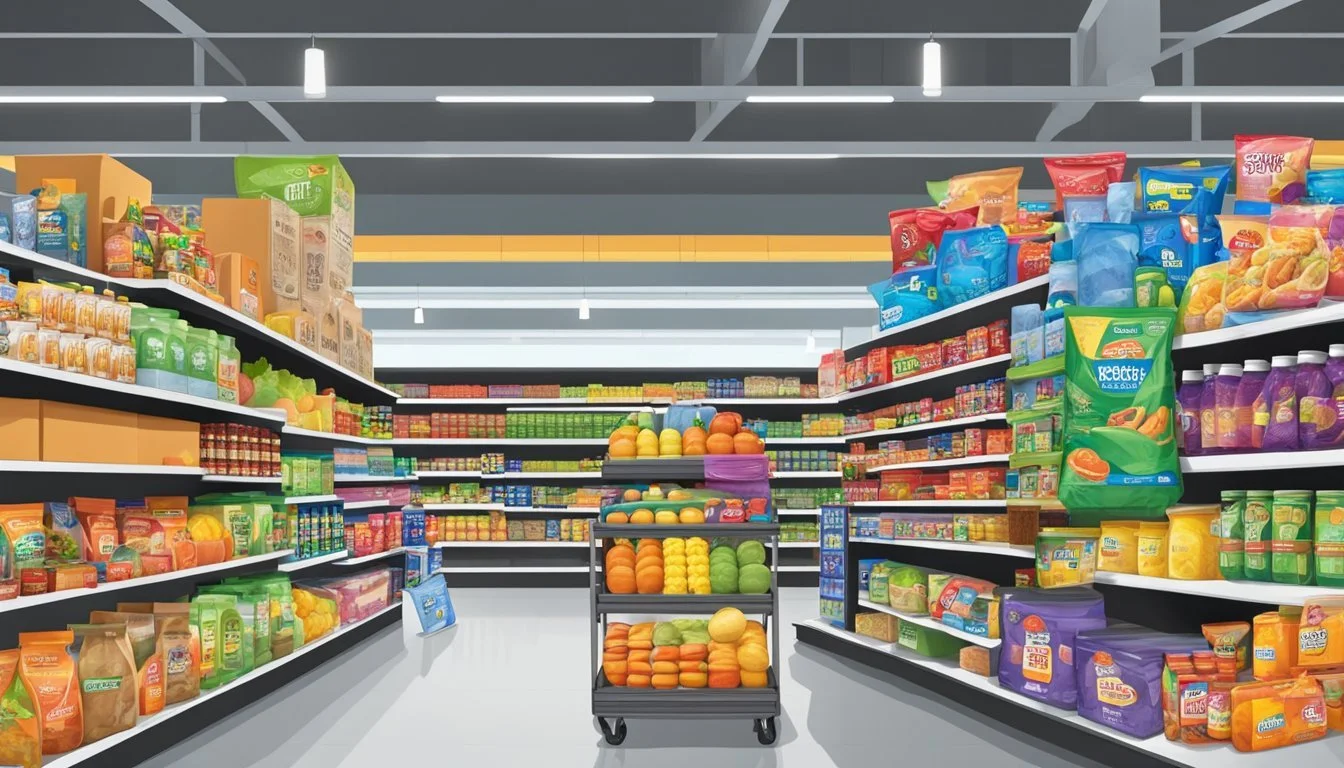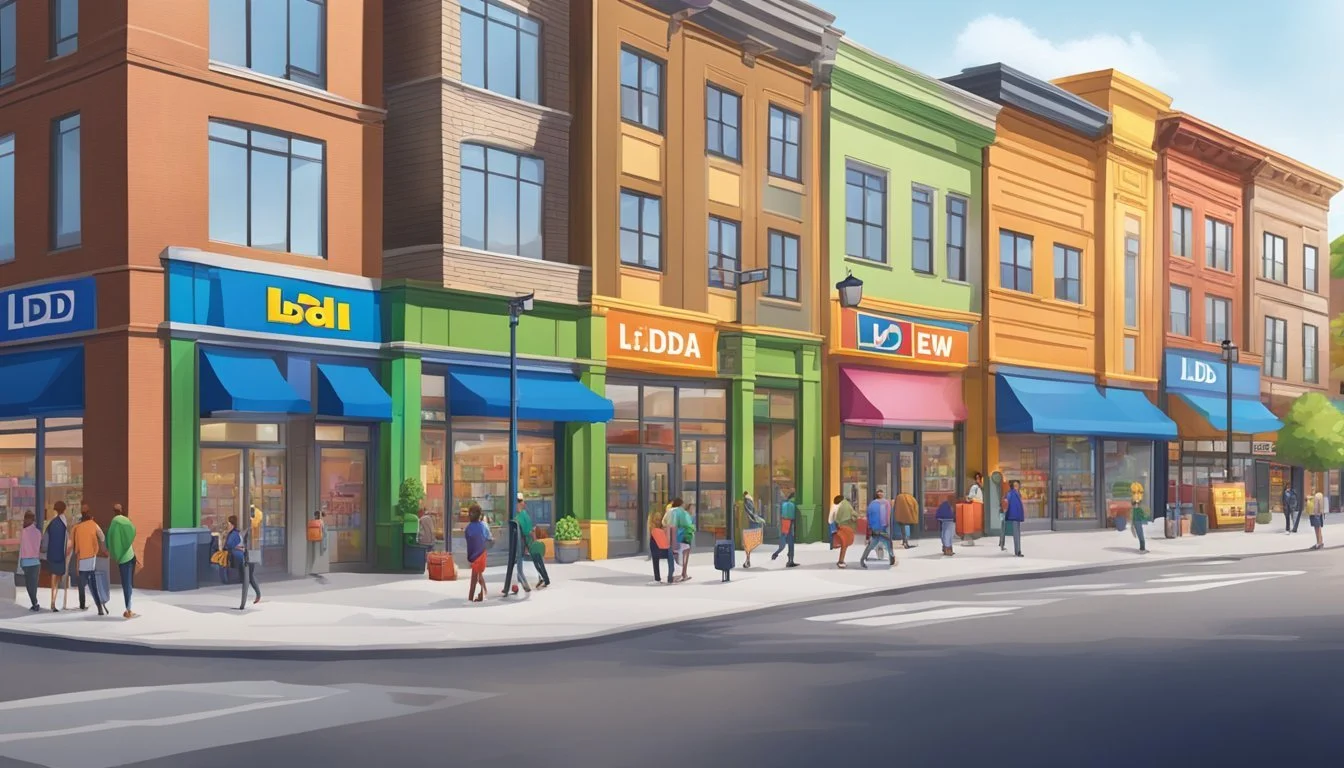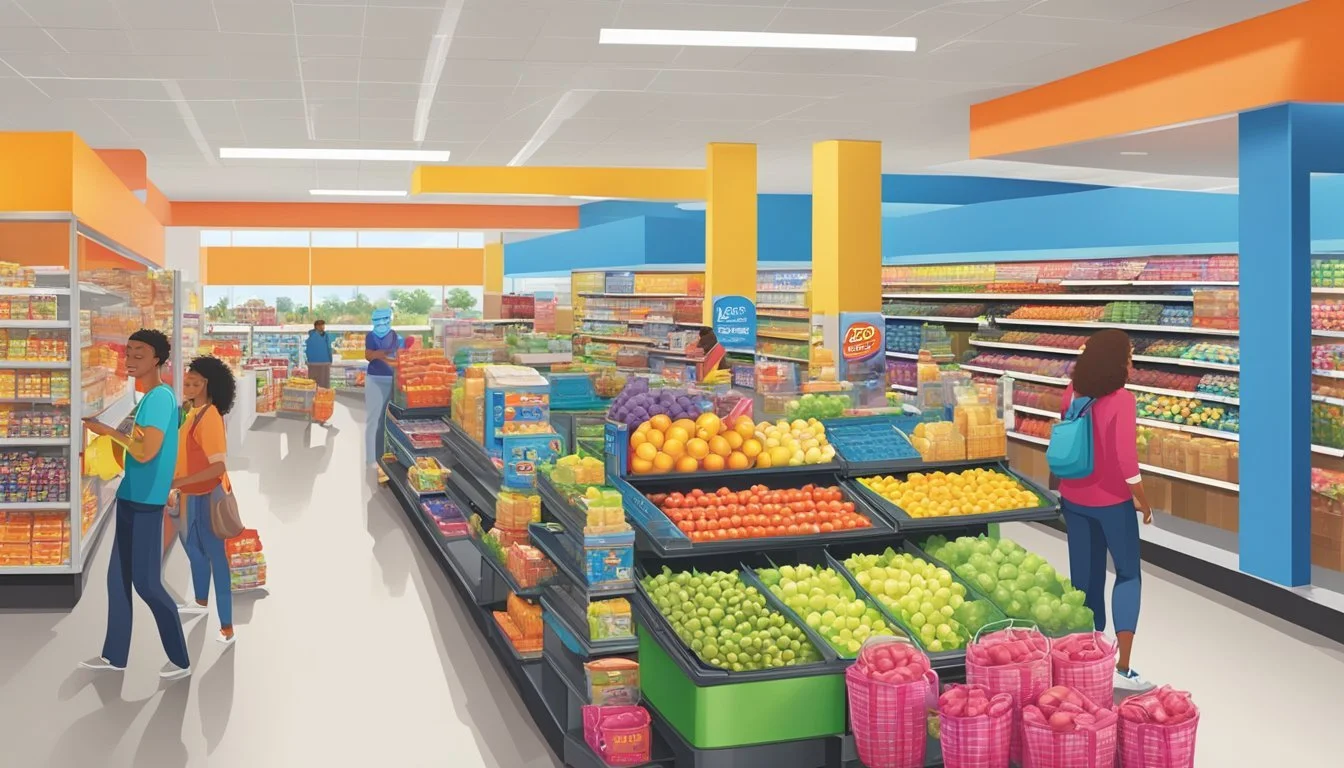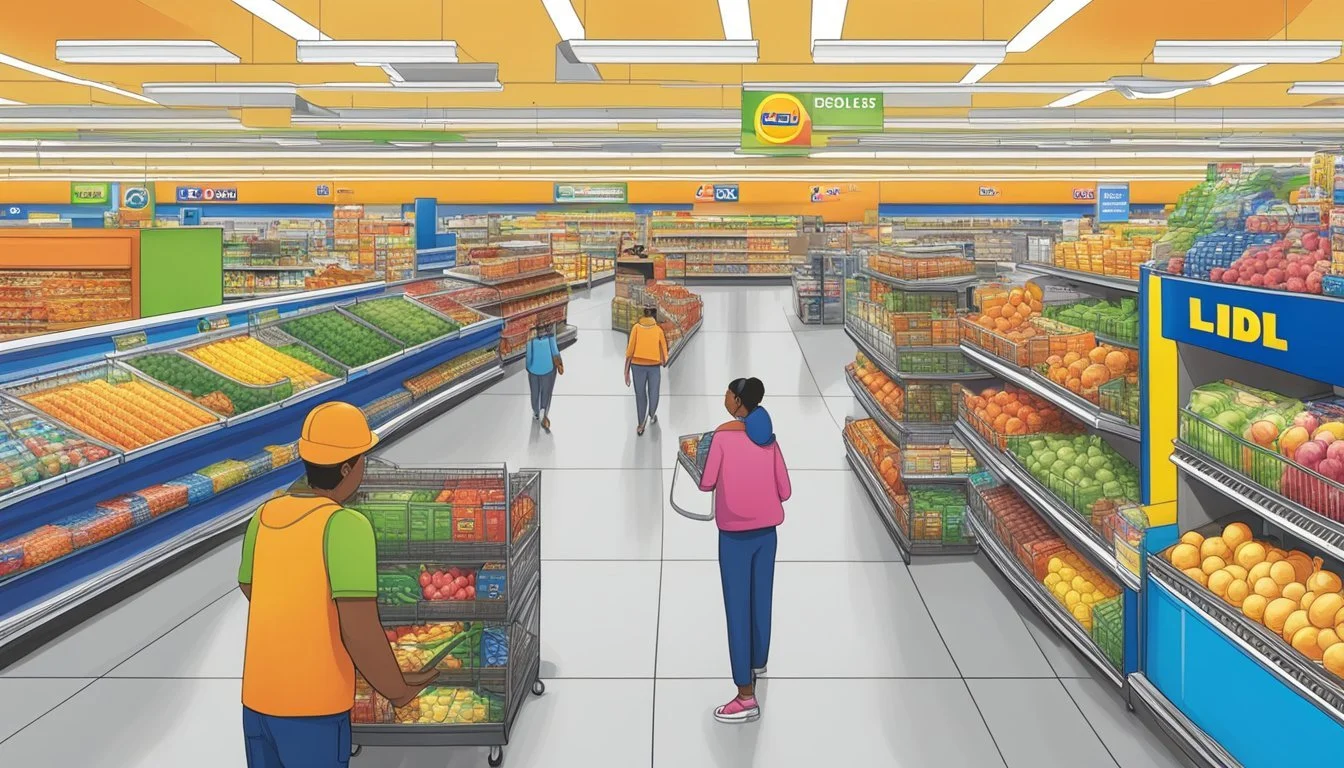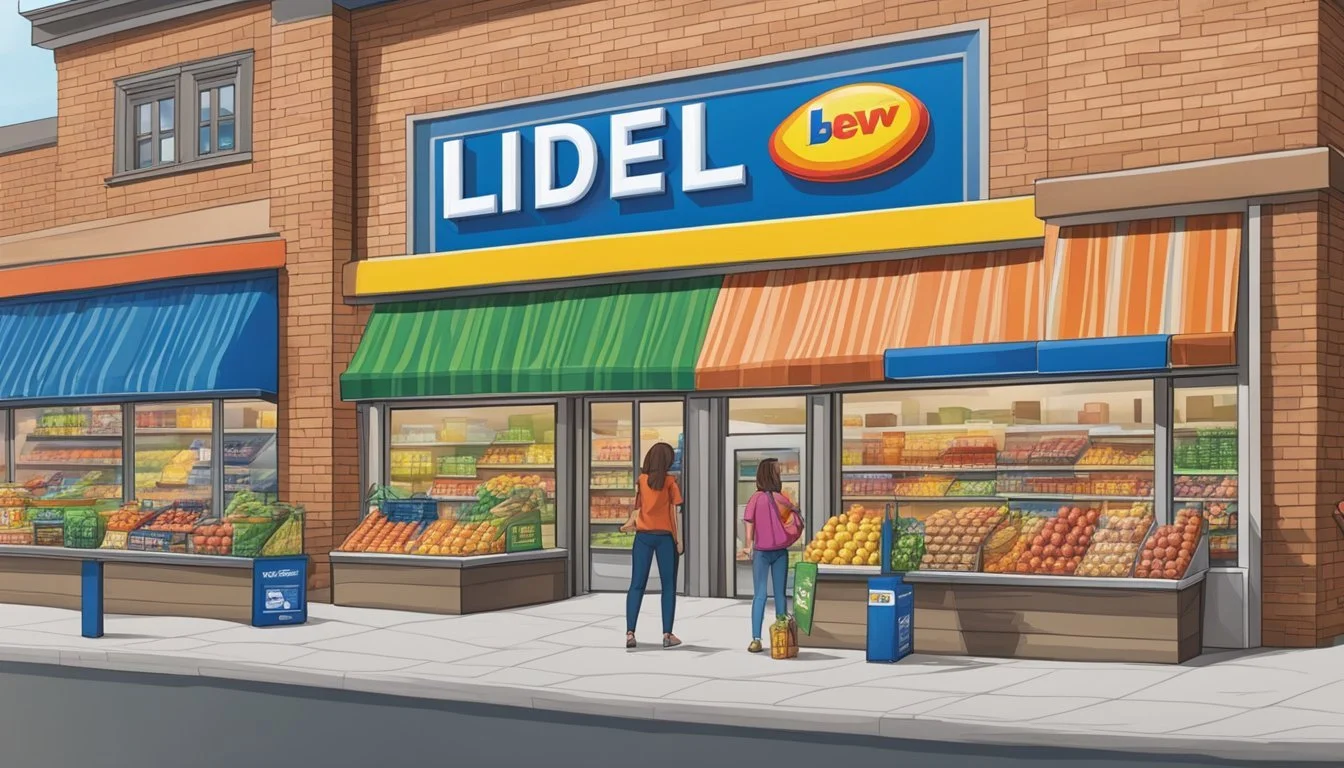Five Below vs Lidl
A Comparative Analysis of Budget Shopping Options
Five Below and Lidl are two popular discount retailers that have gained significant traction in recent years. While both offer low prices, they cater to different consumer needs. Five Below focuses on trendy, affordable merchandise across various categories, primarily targeting younger shoppers. Lidl, on the other hand, is a German-based grocery chain known for its competitive pricing on food and household essentials.
When comparing these two stores, it's important to note their distinct product offerings. For grocery shopping, Lidl is the clear winner as it provides a wide range of food items at budget-friendly prices. Five Below does not stock fresh produce, meats, or other typical grocery staples, making it unsuitable for regular food shopping.
Lidl's expansion in the United States has positioned it as a strong competitor in the discount grocery market. The chain offers a mix of private-label and name-brand products, often at prices lower than traditional supermarkets. While Five Below excels in providing affordable non-food items, it cannot match Lidl's comprehensive grocery selection and everyday low prices on essential household goods.
Company Overviews and Histories
Five Below and Lidl are two distinct retail chains with different origins and business models. Both companies have experienced significant growth and expansion in recent years.
Five Below Overview
Five Below, founded in 2002 by David Schlessinger and Tom Vellios, is an American discount store chain. The company targets teens and pre-teens, offering products priced at $5 or less. Five Below started with a single store in Wayne, Pennsylvania.
By 2024, Five Below has expanded to over 1,300 stores across the United States. The company's growth strategy focuses on opening new stores in high-traffic suburban areas and shopping centers. Five Below's product range includes toys, tech accessories, beauty items, and seasonal goods.
Lidl Overview
Lidl, a German discount supermarket chain, was founded in 1973 by Josef Schwarz. The company began as a small grocery store in Ludwigshafen, Germany. Lidl expanded rapidly across Europe in the 1990s and 2000s.
In 2017, Lidl entered the U.S. market with its first stores on the East Coast. As of 2024, Lidl operates approximately 170 stores in the United States. The company's expansion strategy focuses on offering high-quality products at low prices. Lidl stores typically stock a mix of private-label and name-brand items, with an emphasis on fresh produce and weekly specials.
Product Range and Quality
Five Below and Lidl offer diverse product selections with varying quality levels. Both stores aim to provide affordable options, but their focus areas differ significantly.
Pantry Staples and Fresh Produce
Lidl excels in offering a wide range of pantry staples and fresh produce. Their fruit and vegetable selection is typically high-quality and competitively priced. Lidl's store-brand pasta, canned goods, and baking essentials are often comparable to national brands.
Five Below, on the other hand, has a limited grocery section. They focus more on snacks and candy rather than traditional pantry items. Fresh produce is not typically available at Five Below stores.
Meat, Dairy, and Frozen Sections
Lidl provides a comprehensive selection of meat, dairy, and frozen items. Their meat department often includes both fresh and packaged options. Lidl's dairy section features milk, butter, and various cheeses at competitive prices.
Five Below does not typically carry fresh meat or dairy products. Their frozen section is limited, mainly consisting of ice cream and novelty frozen treats.
Specialty and Store-Brand Items
Lidl offers a range of specialty items through their "Specially Selected" line, which includes gourmet and international products. Their store-brand items, often of good quality, cover various categories including gluten-free and plant-based options.
Five Below focuses on unique, trendy items rather than traditional grocery products. They offer a rotating selection of specialty snacks, drinks, and seasonal items, often at $5 or less.
Lidl's private-label products are comparable to national brands in quality. Five Below's offerings are more focused on novelty and value rather than everyday grocery needs.
Store Locations and Footprint
Five Below and Lidl have distinct approaches to their store locations and physical presence. Their strategies for expansion and market coverage differ significantly, impacting customer accessibility and shopping experiences.
National Presence
Five Below operates over 1,300 stores across 42 U.S. states. The company focuses on suburban areas and shopping centers, targeting regions with high population density. Lidl, in contrast, has a more limited U.S. presence with approximately 170 stores concentrated primarily on the East Coast. Lidl's expansion strategy in the U.S. has been more cautious compared to its European operations.
Location Convenience
Five Below typically chooses locations in strip malls and shopping centers, making them easily accessible to shoppers running errands or visiting other stores. Lidl often opts for standalone locations with larger parking areas, catering to dedicated grocery trips. Five Below's smaller store format allows for more flexibility in urban areas, while Lidl's larger stores are more common in suburban locations with ample space for their expanded product range and in-store bakeries.
Price and Affordability
Five Below and Lidl both aim to offer budget-friendly options, but their pricing strategies and product ranges differ significantly. Let's examine how these retailers compare in terms of affordability and value.
Everyday Low Prices and Special Offers
Five Below maintains a strict $5-and-below price point for most items, with some products priced up to $10. This straightforward pricing model makes budgeting simple for shoppers.
Lidl, as a discount grocer, focuses on keeping food prices low. The store offers a mix of name-brand and private-label products at competitive rates. Lidl's weekly specials and rotating stock of limited-time offers provide additional savings opportunities.
Both retailers emphasize value, but Lidl's grocery focus means a wider range of essential items at discounted prices. Five Below's selection is more limited in terms of everyday necessities.
Comparison With Other Discount Grocers
When compared to other budget grocers like Aldi, Lidl holds its own in terms of pricing. Both Lidl and Aldi employ similar cost-cutting strategies to keep prices down.
Lidl's bakery section often receives praise for offering fresh, European-style breads and pastries at affordable prices. This sets it apart from some competitors in the discount grocery space.
Five Below, while not primarily a grocery store, competes with dollar stores on non-food items. Its slightly higher price ceiling allows for a broader range of products compared to traditional dollar stores.
For grocery staples, Lidl typically offers better value and selection than Five Below. However, Five Below may have an edge on certain non-food categories like seasonal decor and basic electronics.
Shopping Experience and Store Ambiance
Five Below and Lidl offer distinct shopping experiences tailored to their product offerings and target customers. The layout, features, and overall atmosphere of each store contribute significantly to how shoppers perceive and navigate their visits.
Layout and Navigability
Five Below employs a vibrant, open-concept design with wide aisles and clear signage. Products are organized into themed sections, making it easy for customers to find specific items or browse categories. The store's layout encourages exploration, with eye-catching displays and colorful decor.
Lidl, in contrast, utilizes a more streamlined approach. The store layout is efficient, with a focus on quick shopping trips. Aisles are arranged in a logical flow, guiding customers from produce to dairy, meats, and pantry items. Lidl's layout prioritizes functionality, with clearly marked sections and easy-to-read price tags.
In-Store Features
Five Below incorporates interactive elements to enhance the shopping experience. Music plays throughout the store, creating an upbeat atmosphere. Self-checkout kiosks are available, offering a quick option for small purchases.
Lidl emphasizes practicality in its in-store features. Shopping carts are available at the entrance, and cashiers are trained for efficient checkout. The store often includes an in-store bakery, providing fresh bread and pastries. Lidl's wine section is notably curated, offering quality options at competitive prices.
Pre-made food options are limited in Five Below, while Lidl provides a selection of ready-to-eat items near the front of the store. This difference reflects the distinct purposes of each retailer - Five Below as a discount variety store and Lidl as a grocery-focused establishment.
Customer Service and Policies
Five Below and Lidl have distinct approaches to customer service and store policies. Both retailers prioritize customer satisfaction but implement different strategies to achieve this goal.
Guarantees and Return Policies
Five Below offers a straightforward 30-day return policy for most items with a receipt. Customers can exchange or refund purchases within this timeframe. Seasonal and clearance items may have different return rules.
Lidl, on the other hand, provides a "Lidl Love It" guarantee. This policy allows customers to return non-food items within 30 days for a full refund. For food products, Lidl offers the "Twice as Nice" guarantee. If a customer is unsatisfied with a Lidl-brand product, they can return it for a refund and receive a replacement item free of charge.
Staff Friendliness and Efficiency
Five Below emphasizes a fun, energetic shopping environment. Staff members are typically young and enthusiastic, trained to assist customers quickly and maintain a tidy store.
Lidl focuses on efficiency in its customer service approach. Cashiers are known for their speed, often scanning items at a rapid pace to reduce wait times. The store layout is designed for easy navigation, with clearly labeled aisles and product sections.
Both retailers employ a lean staffing model to keep costs down. This can sometimes result in longer lines during peak shopping hours. However, Lidl's efficiency-driven approach often leads to faster checkout experiences.
Brand Positioning and Consumer Perception
Five Below and Lidl employ distinct strategies to attract budget-conscious shoppers. Their approaches to brand positioning shape consumer perceptions and influence shopping preferences.
Market Differentiation
Five Below positions itself as a trendy discount retailer targeting teens and tweens. The store offers a wide range of products priced at $5 or less, creating a unique shopping experience. This strategy appeals to young consumers seeking affordable, fun items.
Lidl, on the other hand, focuses on grocery and household essentials. The German discount supermarket chain emphasizes high-quality products at low prices. Lidl's private-label offerings and rotating selection of non-food items set it apart from traditional supermarkets.
Both retailers prioritize value, but their product ranges cater to different consumer needs and demographics.
Customer Loyalty and Preferences
Five Below cultivates loyalty through its ever-changing inventory and "treasure hunt" atmosphere. Customers often return to discover new, affordable items. The store's focus on trendy products appeals to younger shoppers and parents looking for inexpensive gifts.
Lidl builds customer loyalty through its commitment to quality and low prices. The supermarket's emphasis on fresh produce, meats, and bakery items attracts value-seeking shoppers. Lidl's "Lidl Plus" app offers additional savings and personalized deals to encourage repeat visits.
Consumer perception of both brands is generally positive among price-conscious shoppers. Five Below is seen as a fun, affordable option for non-essential items. Lidl is viewed as a reliable source for quality groceries at competitive prices.

